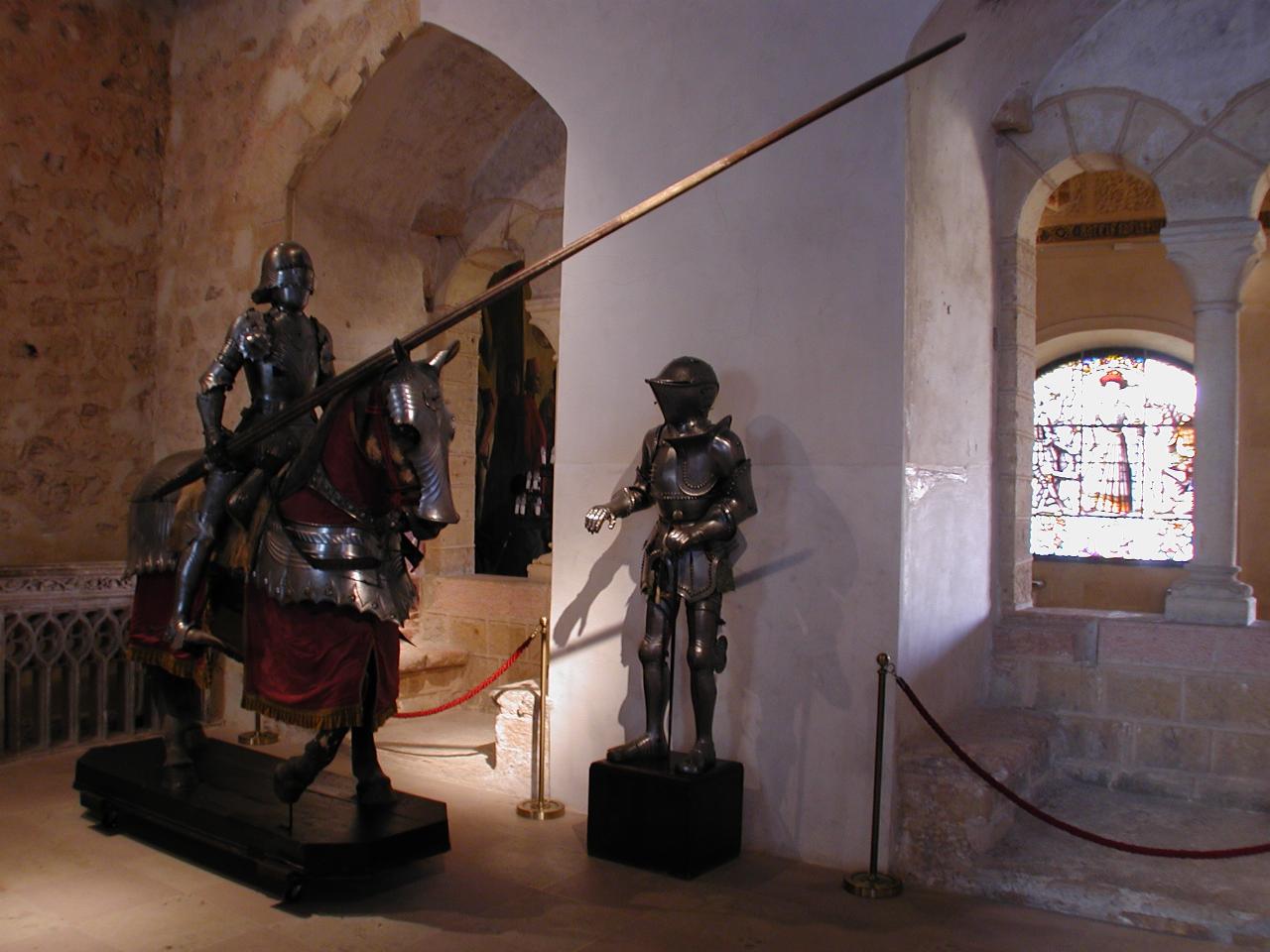
It was originally conceived as a fortress due to its commanding position. It became important in the 15th century when the Trastamara Dynasty turned Segovia and the Alcazar into the royal court. This fort-palace has been the scene of many important events:
In 1862 a fire destroyed a great part of the fort, which has been restored, with the establishment in 1890 of the Spanish General Military Archive, which is still located there.

The Old Castle Hall - the beginning of the (self guided) tour. The suits of armour are of the German type, dating from the 15th century.
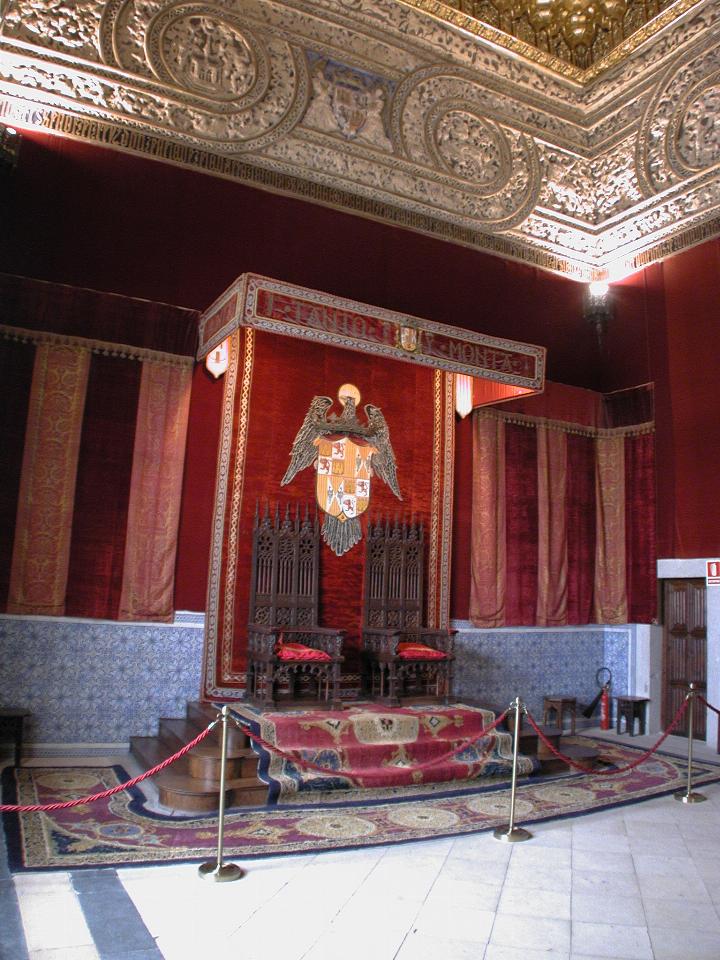
The Throne Hall. These two thrones, and their canopy bearing the arms of the Catholic Monarchs, were constructed at the beginning of the 20th century.
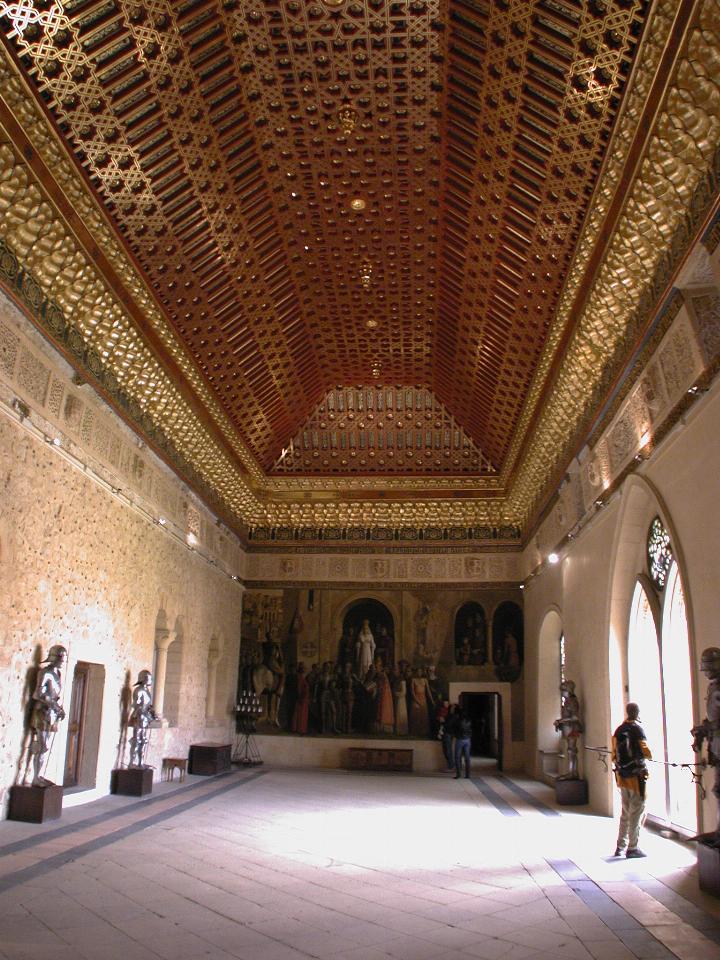
The Galley Chamber, so named for the shape of the ceiling - an inverted ship's hull. Queen Catherine of Lancaster had this room built in 1412, while her son John II was still a minor.
The wall at the far end has a mural-painting of Queen Isabella the Catholic when she was proclaimed Queen of Castile and Leon in the Main Square of Segovia.
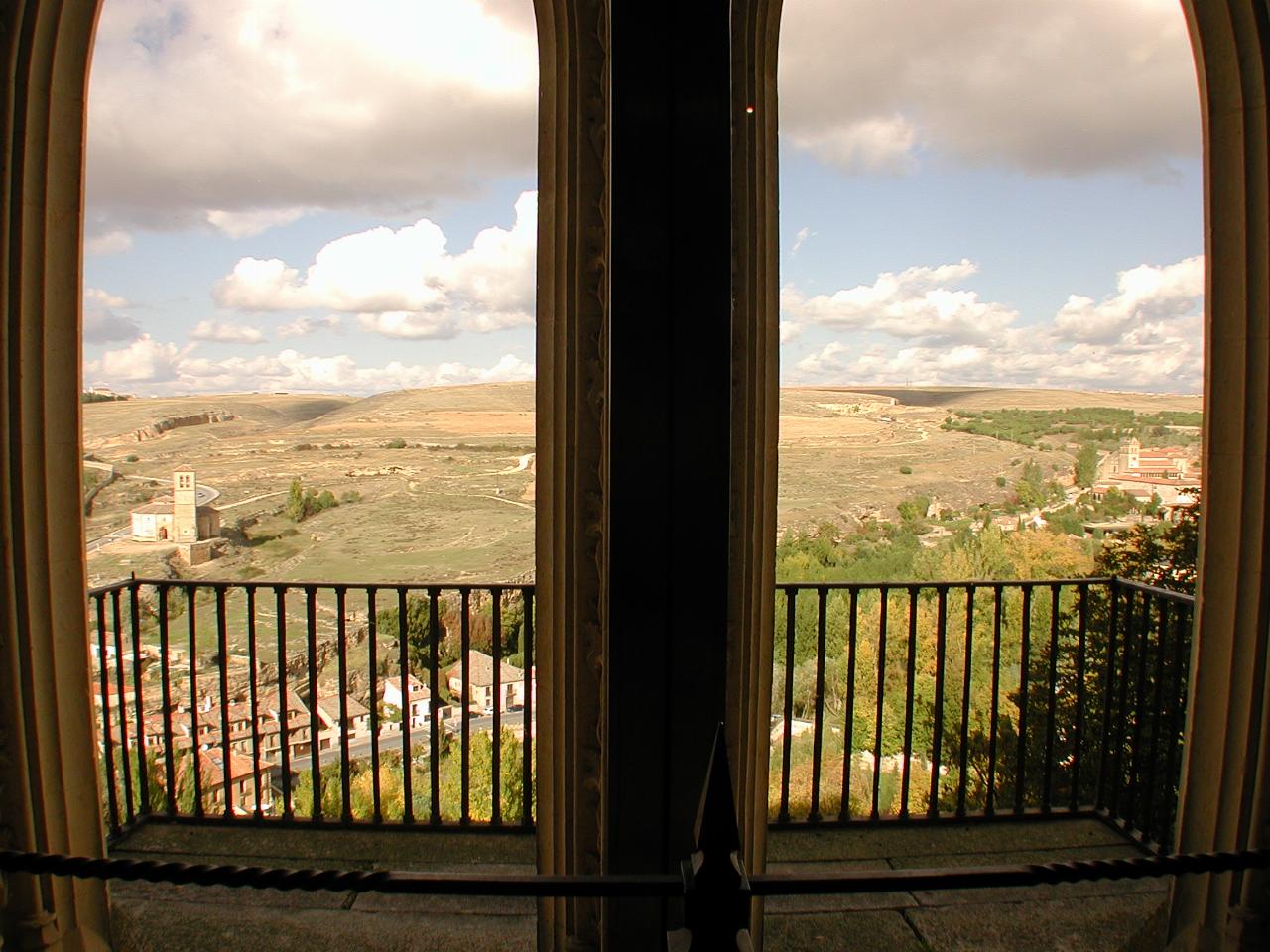
The view from the Galley Chamber. It would be hard to sneak up! The building on the far left (appears circular) is the Church of the True Cross, which was founded by the Order of the Knights Templar. Underneath the tower is a chapel containing a relic of Christ's Cross.
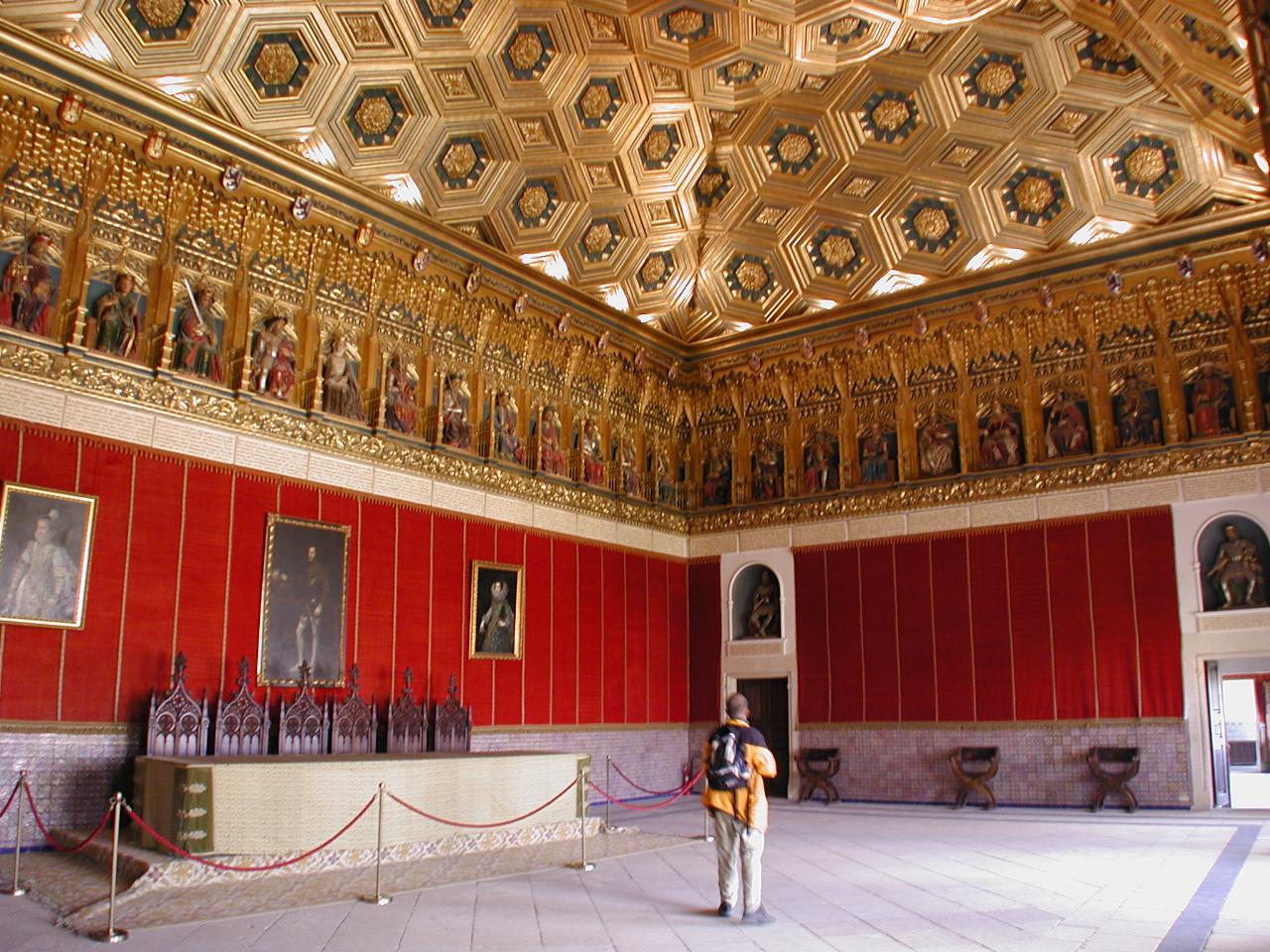
The Hall of Monarchs, in it's time the most important room in the Alcazar. The frieze shows all the monarchs of Asturias, Castile and Leon. The present arrangement of the frieze is a design commissioned by Philip II.
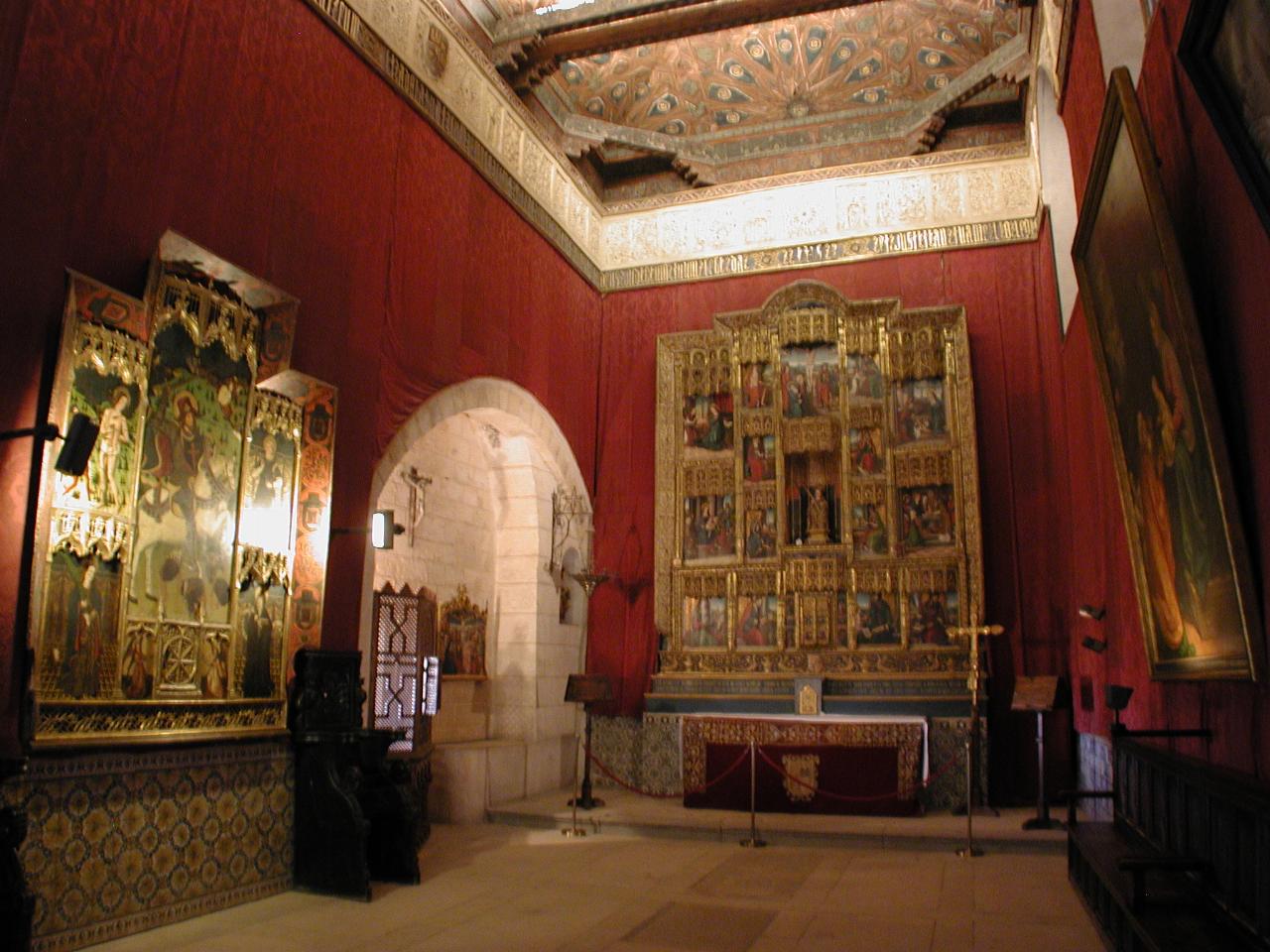
The chapel, complete with mudejar cassioned ceiling. Philip II and Anne of Austria were married here. The main altarpiece, from the 16th century Castilian School, consists of 17 panels with biblical scenes from the Old Testament, and a sculpture of St. Barbara, patron saint of the artillery!
The other altarpiece, also from the Castilian School, but 15th century, is composed of 7 panels, of which the centre one shows Santiago.